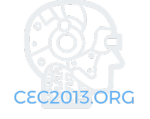 We all depend on technology and nowadays, that cannot be more true. Technology has developed so far that we can use it in less than a second to find out whatever we want. The way technology has evolved is thanks to many great scientific minds who came together and developed anything from central processing units to what powers most search engines and predictive algorithms, artificial intelligence.
We all depend on technology and nowadays, that cannot be more true. Technology has developed so far that we can use it in less than a second to find out whatever we want. The way technology has evolved is thanks to many great scientific minds who came together and developed anything from central processing units to what powers most search engines and predictive algorithms, artificial intelligence.
But when was it created? What were the first signs of AI technology? Surely it wasn’t the terminator? No, it began long ago. Here is a brief overview of AI technology.
Ancient Times to Modern
While we can trace back thoughts of humans as systemic machines back to the times of Ancient Greece, it wasn’t until the 20th century that artificial intelligence came up in talks. The term was first coined in 1956, at a conference in Dartmouth College in Hanover, New Hampshire. The field of AI or artificial intelligence was formed, officially. They believed that the problem of artificial intelligence would be solved within a generation and to an extent, they were right.
The AI Problem
 Artificial intelligence was problematic during the 60s, 70s, 80s, and 90s, even.
Artificial intelligence was problematic during the 60s, 70s, 80s, and 90s, even.
It wasn’t until the late 90s, or to be precise, 1997, that AI actually started to take off. In 1997, an AI called Deep Blue, developed by IBM, beat Kasparov in chess and he is a grandmaster.
That was considered a great feat.
During the previous decades, however, there were phases called AI winter, when the research was scarce, even though governments funded them, all across the world, but to no avail. It took many years for AI to become plausible, mostly due to the processing power and data it required.
Passing the Turing Test – If Slightly
In 2011, a system named Watson, developed by IBM, once more, was able to compete and win in the quiz Jeopardy!. That was a major breakthrough, and an even better one was in 2014 when a bot named Eugene Goostman was able to pass the Turing Test, which is a test developed by mathematician Alan Turing, which is used to determine whether artificial intelligence can pass as a human to humans. The bot passed the test, sort of, but it was not agreed upon by all judges. It deferred some questions by stating that it was a teenager and that English was its second language, a failsafe if there ever was one.
There are reports of computers writing entire books based on data they were fed, not to mention AIs beating people in games, but not through statistics cheats, but by generally playing better than the professionals.

What is The Future? – Deep Learning and Big Data
Big Data is a lot of data that cannot be processed through conventional means. It should not be. Big Data is meant to be used to advance the world by actually analyzing and finding meaningful data, related to a topic or situation.
Deep Learning involves high levels of abstraction by using deep graphs with multiple processing layers. This allows the deep AI to approximate solutions better than a “shallow” one, leading to bots beating people in chess, Go, Doom, and many other scenarios, as well as finding language solutions better, as well as reading traffic signs (AIs in cars).
This has been a brief overview of the history of artificial intelligence, something we should pay attention to in the near future.
